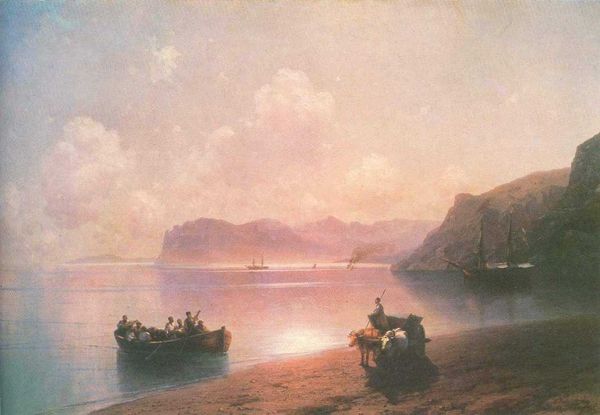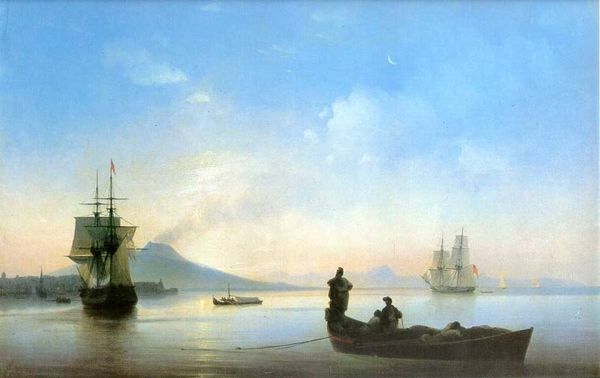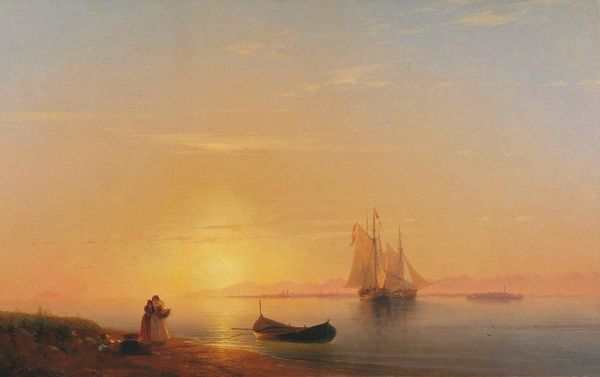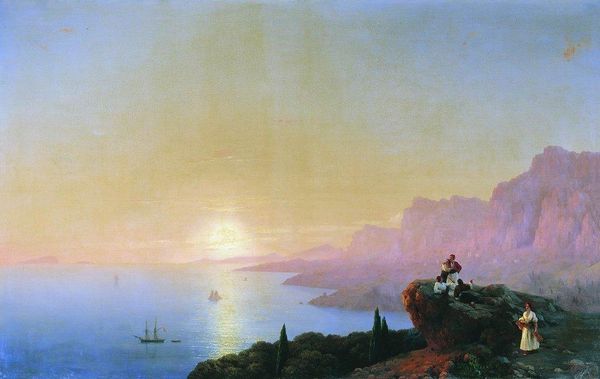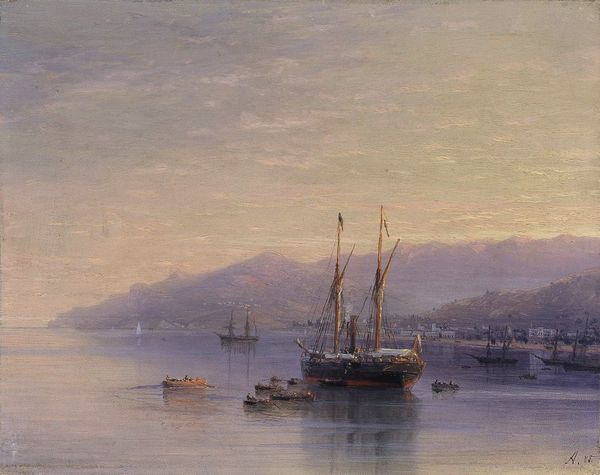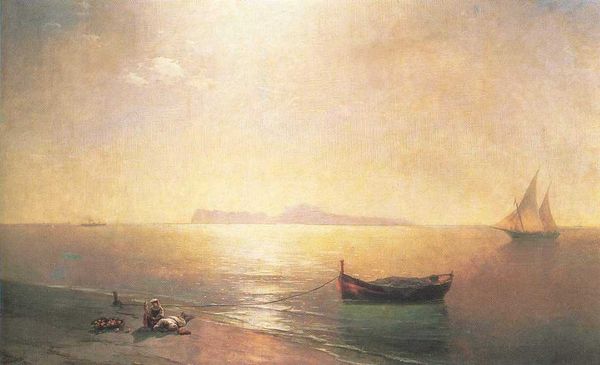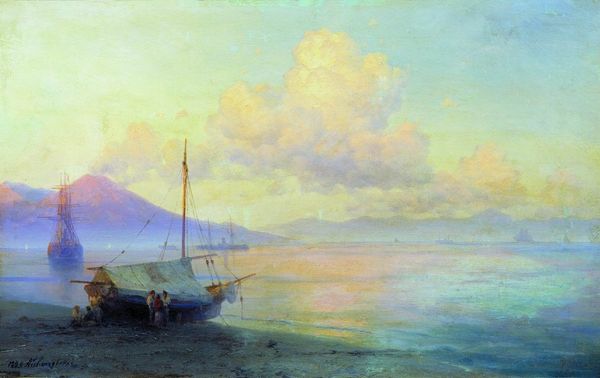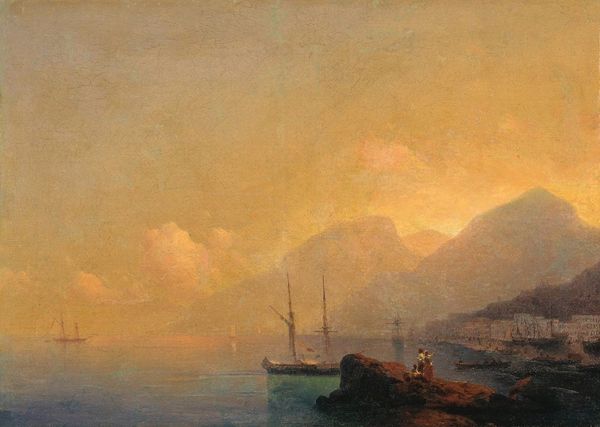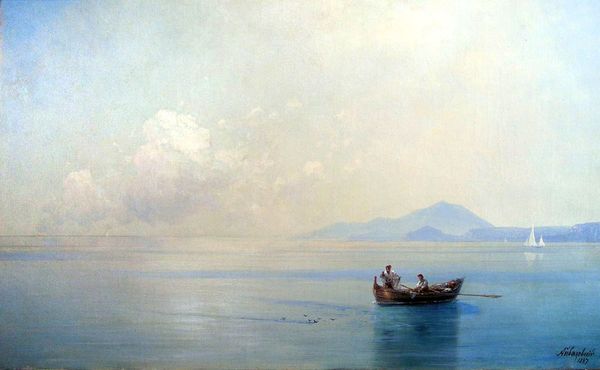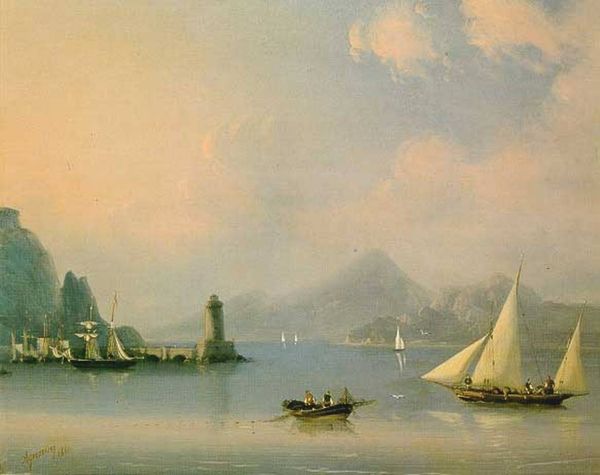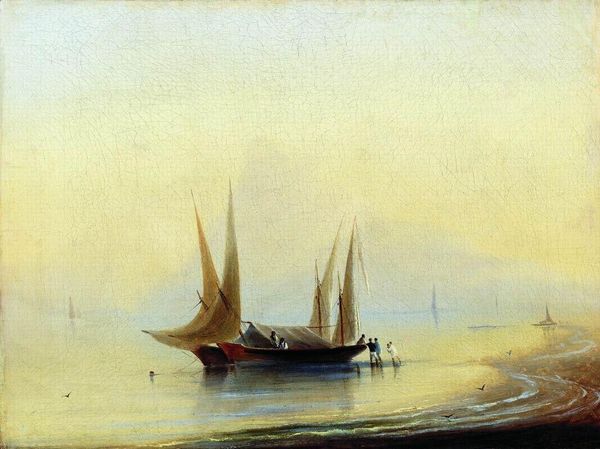
Dimensions: 100 x 160 cm
Copyright: Public domain
Curator: Ivan Aivazovsky painted this canvas in 1858, calling it "Italian Landscape." Aivazovsky was of course known for his seascapes, but it is refreshing to see him capturing this softer, sun-drenched vista. Editor: My immediate feeling is serenity. The way the light filters across the water and those pillowy clouds... it's profoundly calming. I’m drawn to the symbolism of the ship there; is it about to set off, or has it just arrived? Curator: I think that question gets to the heart of Romanticism. Aivazovsky was deeply embedded in its tropes and this Italian landscape evokes an ideal of nature and its relationship with humanity. What is important to observe here is the play between the fleeting moment, such as the passing ship, and the eternal nature represented in this quiet landscape. It shows us a narrative structure common among paintings that were showcased to large audiences in exhibitions, where a narrative was necessary to secure higher prices. Editor: You can see echoes of the classical maritime symbols, can't you? Ships often stand for journeys, voyages, life’s course, things like that. Plus, that fishing boat in the foreground almost serves as a grounding symbol, humanity gently interacting with nature. In art, fishermen often represent the simple life, tied to ancient values of resilience and living off of nature’s provision. Curator: It also has to be stated, this piece probably depicts a highly curated vista. The Italian landscape itself was becoming a symbol—almost a brand—with very tangible economic and cultural capital attached to it during the 19th century. Viewing it was about status, wealth, and the aesthetic refinement ascribed to that class. The politics of imagery indeed. Editor: Oh absolutely! So it goes beyond mere representation, doesn't it? The artist wasn't only capturing a location, but also engaging in this social construction of "Italianness," contributing to a whole visual vocabulary around place and leisure. And he probably knew very well who he would be painting for! It gives it more meaning as the embodiment of an elite, idealized lifestyle. Curator: Precisely, these canvases were commodities, imbued with all of these socio-economic significations. And like any product of the art market, they created new sets of cultural values around nature itself. Editor: Looking again at the work after that discussion, it takes on another dimension for me, from serenity to a scene brimming with deeper societal undercurrents! Curator: Absolutely, art reflects as much as it projects ideas; here that reflection holds truths about nineteenth-century Europe.
Comments
No comments
Be the first to comment and join the conversation on the ultimate creative platform.
